Exploring the A4 Sketchbook: A Comprehensive Guide
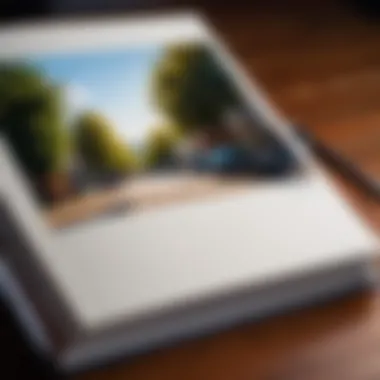

Intro
Sketchbooks have long been the silent companions to artists, students, and everyday doodlers. The A4 sketchbook, in particular, strikes a balance between portability and ample space for creativity. Not only does it offer a canvas for ideas to flow freely, but it embodies a range of personal and artistic significance.
From the pages filled with whimsical sketches in a coffee shop to meticulous studies in a classroom, these books hold a treasure trove of artistic exploration. In this comprehensive guide, we are diving deeper into what makes the A4 sketchbook an indispensable tool in the arsenal of various creative minds.
Understanding the A4 Sketchbook
The A4 sketchbook isn’t just about its size. Measuring 210 x 297 mm, it can fit neatly into a backpack without being too cumbersome. This makes it practical for students, young professionals, and families with budding artists. But more than its convenience, the A4 format provides a spacious area to express oneself. The increased paper real estate means you have the freedom to sketch bigger, blend colors more seamlessly, and let your imagination run wild.
"A sketchbook is a private universe – a blend of reality and fantasy, where the only rules are the ones set by the creator."
Various brands offer A4 sketchbooks with different paper types, qualities, and bindings. The characteristics of these sketchbooks can significantly impact the creative process, giving rise to distinct styles of work based on the texture, weight, and type of paper used.
The Importance of Choosing the Right Sketchbook
While it may seem trivial, selecting the right sketchbook can make a world of difference. Not all papers are created equal; some absorb ink and other mediums better than others, while some feel more suited for pencil work.
When picking an A4 sketchbook, consider your primary use or artistic style:
- Graphite sketches: Look for smooth paper with a slight tooth to hold the pencil marks well.
- Acrylic painting: Heavier weight paper, especially designed to handle moisture without warping, becomes essential.
- Watercolor and ink: Consider papers that are thick and absorbent to prevent bleeding.
These choices might seem simple, but they reflect your artistic intentions and preferences, culminating in the creative energy flowing from your hands to the page.
A Brief History of Sketchbooks
Historically, sketchbooks have evolved quite a bit. From the leather-bound tomes of the Renaissance, where artists like Leonardo da Vinci kept records of their thoughts and observations, to the modern-day variety available in art supply stores – their purpose remains largely unchanged: to capture and document the ephemeral moments of inspiration.
Each sketchbook represents a snapshot of an artist’s journey, filled with various stages of trial and error, exploration, and growth.
Key Takeaways:
- A4 sketchbooks offer a balanced size conducive to various artistic practices.
- The choice of paper plays a critical role in the outcome of the artwork.
- Sketchbooks have a rich history tied to the practices of renowned artists.
In the following sections, we will delve into how to maintain and utilize your A4 sketchbook effectively. Whether you're a student preparing for exams, an artist honing in on their craft, or a family member encouraging creativity in children, understanding sketchbooks can enhance the depth of your artistic endeavors.
Prelims to the A4 Sketchbook
Sketchbooks have long been a cornerstone of the artistic journey, acting as the unsung heroes of creativity. This particular introduction focuses on the A4 sketchbook, a size that balances portability with ample space for exploration. Whether you're an aspiring artist, a busy parent trying to nurture creativity in a child, or simply someone who appreciates the art of sketching, understanding the significance of an A4 sketchbook can profoundly impact your experience.
The Importance of Sketchbooks in Art
Sketchbooks serve as personal spaces for creativity, where thoughts and visions can materialize without the constraints of a blank canvas. They allow artists to experiment with ideas, playfully iterate, and document their artistic evolution over time. For many, a sketchbook is a diary of sorts—a visual log of inspiration.
- Creative Freedom: Having a designated space to sketch fosters a sense of freedom. Artists feel unshackled from the artistic expectations that come with finished works. They can doodle, scribble, or unleash their imagination at will.
- Practice Tool: For students and beginners, a sketchbook provides an invaluable opportunity to practice and hone skills. It’s a safe environment where mishaps can lead to breakthroughs. The aim is not perfection but practice—the more you draw, the better you become.
- Documenting Growth: Over time, your sketchbook will become a canvas that captures your artistic growth and evolution. Looking back through the pages can offer insights into your progress and ignite the desire to push boundaries even further.
"A sketchbook isn’t just a pad of paper; it’s a window into the artist's mind, a place where creativity knows no bounds."
Overview of A4 Size
The A4 sketchbook is particularly favored among artists for its versatile dimensions. At 210 x 297 mm (8.27 x 11.69 inches), it strikes the right balance between being compact enough to carry around while providing ample space to let your ideas flourish.
- Versatile Format: The rectangular shape allows for various layouts, whether you're working on detailed illustrations or broader compositions. This adaptability makes it fitting for a range of artistic expressions.
- Comfortable Layout for Various Techniques: If you’re using fine tip pens, colored pencils, or even watercolors, the A4 size gives you enough room to stretch out your creativity without feeling cramped.
When selecting an A4 sketchbook, it's also essential to consider how the size complements your specific artistic style and approach. The choice of medium—be it watercolor, ink, or charcoal—may influence your preference for a particular sketchbook size.
In essence, choosing an A4 sketchbook is about harnessing a format that can simultaneously inspire bold strokes and intimate sketches, fueling your artistic journey with confidence and comfort.
Historical Perspective of Sketchbooks
The historical perspective of sketchbooks is both fascinating and integral to our understanding of art and creativity. Sketchbooks have served not just as repositories for sketches, but rather as chronicles of artistic evolution. By exploring their origins and how they’ve transformed through the ages, we gain insight into their enduring significance in the art world. This section connects us to the rich tapestry of artistic expression that sketchbooks represent, allowing artists today to learn from their forebears while carving their own paths.
Origins and Early Uses
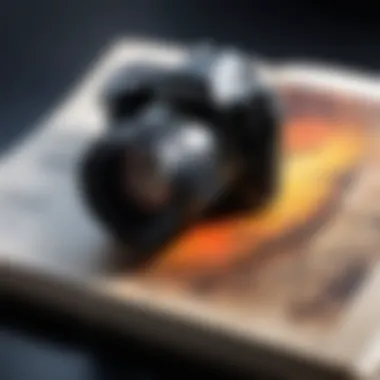

Sketchbooks first emerged during the Renaissance, a period where art blossomed and experimentation ruled. Artists such as Leonardo da Vinci and Michelangelo used their sketchbooks for a multitude of purposes. Not only did they jot down ideas, but they also created detailed studies of anatomy, architecture, and natural forms.
The early use of sketchbooks was highly functional. They were tools for observation and practice, laying the groundwork for the masterpieces that were to come.
- Practical Studies: The first known sketchbooks were often made of loose or bound sheets of paper, facilitating portability. This convenience allowed artists to capture fleeting moments—such as a passerby or the way light danced across a landscape.
- Idea Development: Early sketchbooks acted as a brainstorming tool. Artists would explore concepts, layering thoughts and plans. This iterative process of sketching ideas transformed their artistic vision into reality.
In many ways, these early sketchbooks were like treasure chests, filled not with gold or jewels, but with insights and revelations. They provided a glimpse into the minds of those great artists, revealing their decision-making and creative processes.
Evolution Over the Centuries
Over the centuries, the role of the sketchbook has evolved dramatically, mirroring changes in artistic mediums and societal influences. In the 18th and 19th centuries, sketchbooks became more accessible to those outside the elite circles of patronage. Artists like J.M.W. Turner and Edgar Degas utilized sketchbooks to navigate their evolving artistic identities.
- Expansion of Mediums: As art movements flourished—from Impressionism to Modernism—artists adapted their sketchbooks to suit a wider array of mediums. The diversity of materials like charcoal, pastels, and mixed media found a home within the sketchbook's pages.
- Social Commentary: Furthermore, as societies changed, so too did the subject matter found in sketchbooks. Artists began documenting social issues, exploring the human condition beyond aesthetic contemplation. Sketchbooks became venues for political expression, revealing the artist’s societal concerns.
Today, the importance of sketchbooks persists. They remain a vital part of an artist's journey, allowing individuals to navigate their thoughts and practices in a facilitative environment. The historical lineage of sketchbooks reminds us of their role as more than mere paper; they are essential tools for growth, exploration, and self-expression.
"In every sketchbook lies a world of possibilities, crafted from the simple act of putting pencil to paper."
As we delve deeper into the practicalities of choosing, using, and maintaining an A4 sketchbook, let us keep in mind the rich history that has formed the foundation of our creative practices.
Choosing the Right A4 Sketchbook
When it comes to setting the stage for artistic expression, selecting the right A4 sketchbook is akin to finding a comfortable pair of shoes before a long journey. It paves the way for creativity and influences the outcome of the artwork. With so many options on the market, understanding what to look for can be the difference between a masterpiece and a mere doodle.
Choosing an A4 sketchbook isn't just about aesthetics; it's about functionality, durability, and alignment with your specific artistic needs. As you delve into the process of selecting the right sketchbook, consider factors such as material quality and binding options. Each element plays a crucial role in how your artwork will turn out and how your creative process unfolds.
Considerations for Material Quality
The quality of the materials used in a sketchbook can greatly affect not just the look, but also the feel of your sketches. When you hold a sketchbook crafted with care, you can feel it speaks to your artistic soul. Here are a few elements to take note of when considering material quality:
- Type of Paper: Look for acid-free paper to ensure your drawings don't deteriorate over time. Heavier paper can withstand a range of mediums, while lighter paper might buckle easily with wet mediums.
- Surface Texture: Smoother papers may be better for fine details and precise lines, while textured papers can add depth to your work, especially with charcoal or pastels.
- Weight of the Paper: The weight, usually measured in GSM (grams per square meter), determines how well the paper can handle various media. Opt for at least 160 GSM for mixed media to minimize bleed-through.
In essence, investing attention to the material quality aids not only in enhancing your art but also prolongs the life of your sketches.
Binding Options: Spiral vs. Hardcover
Choosing between spiral and hardcover for your A4 sketchbook involves more than just preference; it impacts how you interact with the pages. Each binding type caters to different habits and techniques:
- Spiral Binding: This type is perfect for artists who enjoy laying their sketchbook flat. It allows for complete freedom of movement while you draw. You can flip the pages back easily, providing a seamless sketching experience whether you're scribbling or painting.
- Hardcover Binding: A hardcover sketchbook offers a more durable option that protects your sketches. It's ideal for those who travel or want to maintain a polished appearance. The solid cover adds rigidity and keeps your pages safe from bending and damage.
Remember: Selecting the right binding isn’t just about appearance; it influences your creative flow and how easily you can express yourself through your sketches.
In wrapping it all up, the journey of choosing the right A4 sketchbook is a mix of personal taste and practical requirements. Quality materials and the appropriate binding will set the stage for artistic growth, allowing young professionals, families with children, and budget-conscious individuals to fully unleash their creativity in this vibrant realm of art.
Understanding Paper Types
When diving into the world of sketchbooks, one cannot overlook the significance of paper types. Paper is not just a surface; it is the very foundation upon which ideas take form and creativity flows. Different papers bring unique qualities that can alter the outcome of your sketches, making this choice an essential aspect in every artist's journey. Understanding the intricacies of paper helps artists leverage its benefits while avoiding potential pitfalls, allowing for a more fulfilling creative process.
Weight and Texture: Key Factors
The weight of the paper, measured in grams per square meter (gsm), plays a crucial role in how it handles various mediums. Lighter papers, those below 150gsm, tend to be more delicate. These may buckle or warp when wet, which could be troublesome for some techniques. On the other hand, heavier papers (around 200gsm or more) lend themselves well to both dry and wet mediums, providing a robust surface that can withstand vigorous strokes or washes.
Texture is another factor that can’t be ignored. It falls into three main categories: smooth, medium, and rough. Each type establishes a different feel and look to your art.
- Smooth paper is ideal for fine detail work, making it perfect for ink or graphite.
- Medium textured paper offers a balanced solution, accommodating various techniques without leaning to extremes.
- Rough paper, as the name suggests, provides a pronounced texture which is great for watercolors and other wet mediums, adding a tactile quality to the finished piece.
A good grasp of weight and texture not only influences the final image but also enhances the artist's experience. Whether aiming for precise details or vibrant washes, the right paper type can make all the difference.
Suitability for Various Mediums
In the realm of sketchbooks, the choice of medium directly correlates to the type of paper used. Below, we’ll break down the suitability of A4 sketchbook paper for various popular artistic mediums.
Graphite Pencils
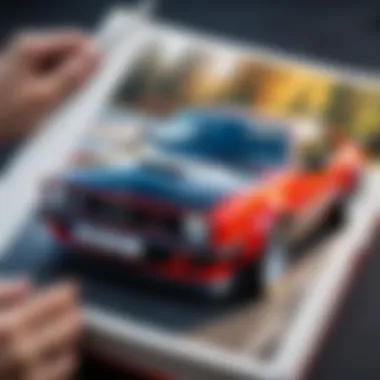

Graphite pencils are perhaps the most familiar tools for artists. The unique aspect of these pencils is their adaptability; they can create everything from delicate lines to bold shades. A4 paper suited for graphite typically has a smooth or lightly textured surface. This allows for clear, crisp lines without snags.
Key characteristic: The exceptional control offered by graphite ensures that artists can paint intricate details and subtle shadows. It remains a popular choice due to its availability and variety in hardness (ranging from H for hard to B for soft).
Advantages:
Graphite is inexpensive, easy to erase, and readily available, making it a top-tier choice for those starting their artistic journey. However, on textured paper, the marks might not appear as sharp.
Acrylic Paint
Acrylic paint has gained traction among artists due to its versatility. It dries quickly, is water-resistant when dry, and can be thinned for a watercolor-like finish when wet. Papers designed for acrylic typically have a heavier weight, often between 200gsm and 300gsm, to absorb the paint without buckling.
Key characteristic:
Acrylics allow for layering and texture, enabling artists to build complex forms and finishes. Additionally, they come in a wide range of vibrant colors, allowing for vivid expression.
Advantages:
The fast-drying aspect is a boon for many artists who appreciate working in layers. Nonetheless, if not watched, acrylics can dry too quickly on certain papers, leading to unexpected changes in texture or color.
Watercolors
Watercolor paints demand a special kind of respect. The fluidity and translucency of watercolors are best captured on textured watercolor paper, typically known for its cotton composition and weight between 300gsm to 800gsm.
Key characteristic:
Watercolor paper must absorb water without warping. This quality gives artists the freedom to manipulate how the paint interacts with the paper, creating beautiful washes and gradients.
Advantages:
The beauty of watercolors lies in their unpredictable nature, which many find inspiring. The downside is that watercolor techniques often require patience and an understanding of the medium's behavior.
"Choosing the right paper can be as critical as selecting the right medium."
In summary, understanding the qualities of paper types is imperative for artists using ink, acrylics, or watercolors. Each medium brings its needs and characteristics, and a well-informed choice enhances the creative journey, allowing for a richer and more satisfying artistic practice.
Techniques for Effective Sketchbook Use
When it comes to harnessing creativity, the methods adopted in a sketchbook speak volumes about an artist’s approach. Effective use of a sketchbook is not just about putting pencil to paper; it's a nuanced practice that can significantly enhance artistic skills and personal expression. Notably, establishing solid techniques fosters a conducive environment for creativity, allowing ideas to flow freely while providing a grounding experience for those just starting out or looking to refine their skills.
Sketching Basics: Getting Started
Beginning to sketch can feel a bit daunting, especially if you're staring at a blank page. However, breaking it down can ease that pressure. Here's where intention and freedom come into play.
Start by setting aside dedicated time for your sketching sessions. This creates a routine that sharpens your focus. Next, don’t worry about perfection. Allow yourself the room to explore, experiment with shapes, textures, and lines without holding back. A flowing line or quick stroke can convey emotions effectively, often more so than an intricate, detailed drawing.
To kick things off, consider employing a few basic techniques:
- Gesture Drawing: Capture the essence of your subject quickly, emphasizing movement or posture.
- Blind Contour Drawing: This is a fun exercise where you draw without looking at your paper. It enhances your observational skills.
- Daily Sketching: Just a few minutes each day can lead to significant improvements over time.
Incorporating these basics can transform your sketchbook into a dynamic tool for growth. Not only will it serve as a home for your doodles and drafts, but it also becomes a visual diary of your artistic journey.
Incorporating Visual Journaling
Visual journaling breathes life into sketchbook practices, merging art and writing in a delightful dance of expression. It’s especially beneficial for individuals looking to capture not only their art but their thoughts and experiences in tandem.
To start visual journaling, consider these steps:
- Choose a Theme or Concept: Sometimes a focal point can help guide your entries. Whether it’s a trip, an emotion, or a specific style, having a theme can provide a framework.
- Mix Text with Images: Create a balance between illustrations and written reflections. Scribble your thoughts beside sketches or overlay graphics with quotes or personal notes.
- Experiment with Materials: Use gel pens, markers, or even watercolor to add vibrant color to your pages. The variation in texture can make the process more engaging.
Visual journaling encourages a deeper connection with your art. It's a conversation between the mind and the canvas, leading to discoveries one may not have anticipated.
In essence, effective techniques for using a sketchbook enrich the creative landscape for artists, students, and anyone keen on expressing themselves. Whether through the basics of sketching or the delightful practice of visual journaling, each page turned can reveal new insights into your artistic capabilities.
Maintaining Your Sketchbook
Maintaining an A4 sketchbook is crucial for a variety of reasons. First, it's a space where you can preserve your artistic journey and capture your creative thoughts. A well-maintained sketchbook not only showcases your growth as an artist but also serves as a reference for your future projects. It is more than just a collection of drawings; it becomes a living document of your exploration, experimentation, and evolution in art.
Organizational Strategies
Keeping your sketchbook organized can significantly affect not only the ease of access to your previous works but also your creative process. Here are several effective organizational strategies to consider:
- Dedicate Sections: Allocate specific sections for different themes or projects. For example, one section could focus on figure drawing, while another explores landscapes. This way, you can easily locate your works.
- Date Your Work: Always write the date next to each piece or at the top of a new page. This can help in tracking your progress over time and also serves as a reminder of your artistic phases.
- Use Tabs or Stickers: If your sketchbook permits, use tabs or colored stickers to mark important pages. This can help when you want to revisit certain works or refer to a specific style.
- Create an Index: If your sketchbook is on the larger side, consider adding an index at the front or back. This could include topics or themes and the page numbers where they can be found. It streamlines the search process for particular works or ideas.
- Visual Diary: Incorporate a visual diary approach. This involves combining sketches, thoughts, and commentary on your artistic journey, which adds depth and character to your sketchbook.
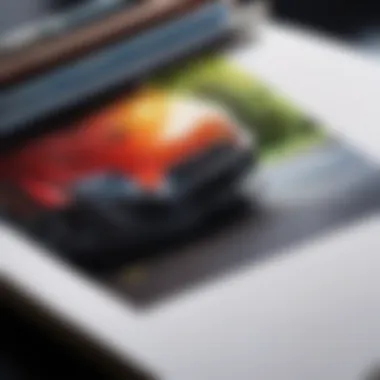

Preservation Techniques
Careful preservation is essential to keep your sketches in top condition. Using simple techniques can make a significant difference in the longevity of your artwork:
- Select Appropriate Materials: Use quality sketchbooks made from acid-free paper. This paper type can resist yellowing and degradation over time, preserving the integrity of your sketches.
- Avoid Direct Sunlight: Keep your sketchbook out of direct sunlight and away from areas with high humidity. Such conditions can cause fading or damage and compromise the quality of your sketches.
- Store Properly: When not in use, store your sketchbook flat and avoid stacking heavy objects on top. This prevents the pages from bending or tearing.
- Digitize Your Art: Consider taking high-quality photos or scanning your sketches. This not only serves as a backup but also allows you to share your work easily, especially if the originals are at risk of damage.
"Your sketchbook is not just a collection of drawings; it is your visual voice, a testament to your growth as an artist. Ensure it speaks for you long into the future."
Preserving and maintaining your A4 sketchbook isn't merely about keeping it neat; it's about allowing your creativity to flourish while ensuring that all of your efforts are honored and protected. By adopting these organizational and preservation techniques, you can cultivate a sketchbook that reflects your artistic journey and stands the test of time.
Innovative Uses for A4 Sketchbooks
In the realm of art and creativity, A4 sketchbooks stand as versatile companions. This section is dedicated to unearthing the innovative uses for these valuable tools. It's not merely about putting pencil to paper anymore; it's about discovering the endless possibilities locked within those pages. The beauty of A4 sketchbooks lies in their adaptability, making them essential for artists, students, families, and thrifty individuals alike.
Exploring Mixed Media
Mixed media allows artists to break free from traditional boundaries and explore various creative techniques. When utilizing an A4 sketchbook for mixed media, you’re opening the door to a world where materials can blend together to create unique textures and profound visual narratives. The larger A4 size provides ample space for layering materials, whether it's paint, pencil, or collage items.
When engaging with mixed media, here are some key points to consider:
- Choose the Right Paper: Paper thickness plays a crucial role in mixed media applications. Opt for heavier weight paper to support moisture from paints or pastes. This will help prevent warping over time.
- Experiment Freely: The beauty of mixed media is in exploration. Feel free to combine colors, textures, and materials without the fear of mistakes. Let your intuition guide you; every experiment can lead to an intriguing outcome.
- Document Your Process: An A4 sketchbook is perfect for documenting the journey of your mixed media works. Adding in notes, sketches, or collage pieces can help enhance later projects and clarify your thoughts. This approach not only nurtures creativity but also helps in personal growth as an artist.
In summary, utilizing the A4 sketchbook for mixed media enables experimentation and fosters artistic growth, paving the way for creative discovery and personal expression.
Collaboration Projects
Collaborative art projects are not just about sharing the canvas; they’re about merging minds and imaginations. When it comes to using A4 sketchbooks for collaborations, the potential for innovation is endless. It allows artists to engage with one another in vibrant, expressive ways.
Here's what makes collaboration with A4 sketchbooks valuable:
- Shared Inspiration: When working with others, ideas can bounce around like a game of ping-pong. This cross-pollination of thoughts can lead to unforeseen artistic outcomes. Each artist can contribute their unique style, making the end result a true melting pot of inspiration.
- Coordinated Pages: Use specific pages for designated tasks—one person can focus on sketching, while another could layer colors or add textures. This leads to a rich interplay of techniques that can transform the work into something extraordinary.
- Portfolio Development: A collaborative process culminates in a shared body of work. An A4 sketchbook can serve as a portfolio piece that displays not only your contributions but also highlights the dynamic creativity of teamwork.
Collaboration encourages growth and deepens the connection between artists, turning individual visions into a tapestry of communal creativity.
Sketchbooks in Education
Sketchbooks are not just a playground for artists; they hold immense value in educational settings too. Their role spans beyond mere drawing; they serve as tools for exploration, experimentation, and reflection. One may wonder why incorporating sketchbooks into education is important. Well, they foster creativity and critical thinking in students, promoting a hands-on approach to learning. When students wield a sketchbook, they can transcend traditional methods of education, engaging their imaginations in ways that enhance their overall understanding of concepts.
Benefits for Students
The advantages of using sketchbooks in education are numerous and far-reaching. Here are some significant benefits:
- Enhancing Creativity: Sketchbooks offer a safe space for students to express their ideas freely. This encourages an environment where creativity flourishes. Instead of a blank page intimidating them, students can let loose their thoughts, explore different styles, and develop a unique voice in their art.
- Visual Learning: For many learners, visual representation aids comprehension. Sketching ideas can solidify an understanding of complex subjects. A student studying biology, for instance, might draw a diagram of the human circulatory system, integrating visual learning with textbook knowledge.
- Documentation of Progress: Using a sketchbook allows students to keep track of their artistic journey. It serves as a tangible record of their growth, showcasing the evolution of their skills. Looking back at previous works can be both motivating and instructional. They might notice mistakes or recognize improvements as they turn the pages.
- Emotional Outlet: For some students, articulating feelings through words may not come easily. Sketchbooks can provide a visual outlet for emotional expression, allowing students to manage stress or anxiety. In this sense, they become a tool for mental health, promoting wellness in educational settings.
Sketchbooks in Art Curriculum
Integrating sketchbooks into the art curriculum adds layers of depth and richness to the learning experience. They should not merely be an afterthought but rather an integral part of the educational plan. Here are some considerations regarding sketchbooks in art education:
- Encouraging Exploration: Art teachers can encourage students to experiment within their sketchbooks, trying new mediums and techniques without the pressure of a final product. This can lead to unexpected discoveries and an eagerness to learn.
- Reflections on Practice: Structuring time for students to reflect on their sketches can inspire deeper thinking about their work. Questions such as "What emotions do my drawings convey?" or "How has my style changed?" can provoke critical assessment that enhances artistic growth.
- Integrative Projects: Sketchbooks can facilitate interdisciplinary projects that weave art into subjects like science, history, and literature. For instance, students could create visual narratives of historical events or illustrate characters from stories, merging creativity with academic content.
- Collaboration Opportunities: Sketchbooks can prompt collaborative efforts among students, leading to group projects and shared experiences. These efforts can build camaraderie and teach teamwork skills as they work together to create something meaningful.
Using sketchbooks in education equips students not just with artistic skills, but also valuable life lessons in discipline, exploration, and self-expression.
Epilogue: The Lasting Value of A4 Sketchbooks
As we wrap things up, it’s vital to consider just how pivotal A4 sketchbooks are in the realm of art and creativity. They are more than just collections of blank pages; they serve as mirrors to our growth, reservoirs of inspiration, and canvases for experimentation. The way a sketchbook holds ideas reflects not just artistic flair but also personal evolution.
Reflecting on Personal Growth
Think back on your journey. Each sketch, doodle, or note scribbled in an A4 sketchbook captures a fleeting thought or a spark of inspiration. For many, these books symbolize the struggle, the triumph, and the sheer joy of creation. An A4 sketchbook isn’t merely a tool—it’s a testament to one’s artistic odyssey. When picking it up to reflect, artists can see how their skills have blossomed over the months or years. This continuous documentation leads to a tangible acknowledgment of their progress.
“A sketchbook tells the story of an artist's journey—a unique narrative of growth that unfolds with each turn of the page.”
In various educational settings, sketchbooks promote not just artistic practice but also personal reflection. They allow students to connect experiences to visuals, creating a holistic view of learning. In turn, this process can boost confidence, as artists, young and old, realize that growth takes time and that every artist, at some point, was just starting out.
Encouragement for Continued Exploration
As we move forward, the A4 sketchbook beckons us to explore further. There’s no end to the techniques and styles waiting to be discovered. Each page is an open invitation, a space to push boundaries and discover the self. Artists at all levels should embrace this aspect—take comfort in the journey, and do not hesitate to dive into the unknown. Whether experimenting with mixed media or venturing into new subjects, the sketchbook serves as a safe harbor.
Consider keeping your A4 sketchbook at hand—ready for those moments of inspiration that come out of nowhere. Wherever life takes you, your sketchbook captures the essence of your artistic pursuits. Who knows what breakthroughs you might achieve?
In essence, A4 sketchbooks are more than tools. They're partners in the creative journey, bearing witness to personal and artistic growth while standing as a source of inspiration for continued experimentation. So, pick up that sketchbook, and let it guide you through the labyrinth of your imagination. The future of your artistry is waiting to be explored.

Колготки утепленные
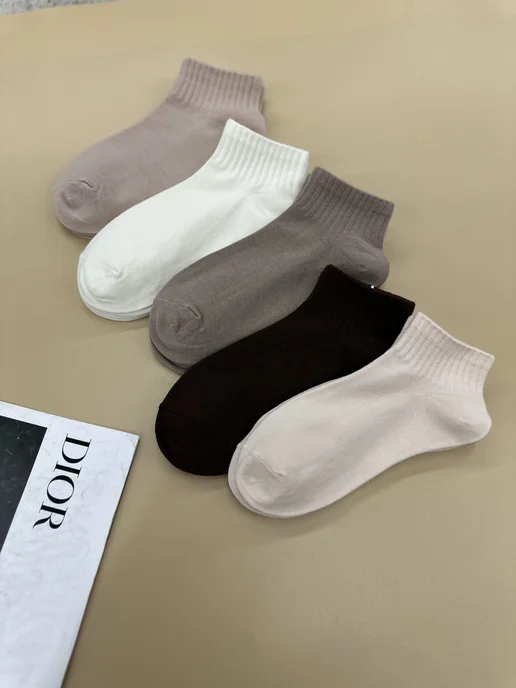
Носки короткие в рубчик набор 5 пар

Соска пустышка латексная для малышей 6-12 месяцев, вишня

Колготки школьные однотонные из хлопка

Носки короткие Утки, 3 пары

Кисть косметическая № 5 для теней овальная
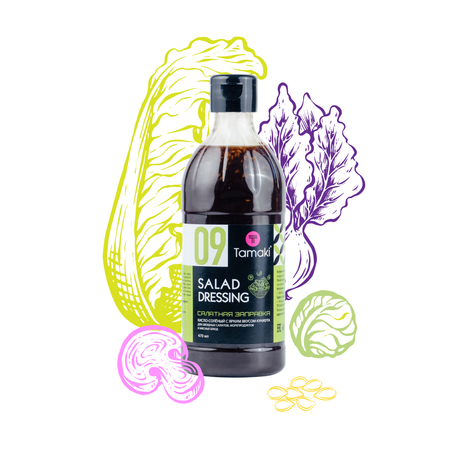
Соус Tamaki Заправка для салата 470 мл




